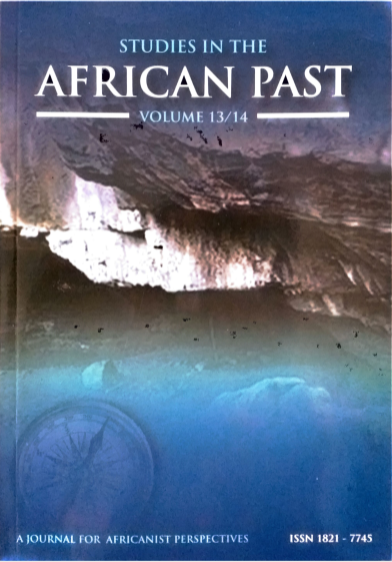Refugees Came and Left, What Remains? The Case of Ngara District, North-Western Tanzania
Abstract
Abstract This article is based on a study which used a qualitative approach to examine the impact of refugees on the intangible cultural heritage of the host community. In-depth interviews, non-participant observation and focus group discussions were used to gather data from Ngara District in Tanzania. Data was analysed using an inductive approach. The article reveals that the presence of refugees in an area, accelerated by socio-economic demands, can lead to both negative and positive effects on the intangible cultural heritage of the locals. The article concludes that despite the fact that refugees affect the intangible cultural heritage of the host community, there is a need of involving the local community in protecting and managing the positive effects accrued from the refugees. This will be the best way of eradicating the negative effects. The article provides better understanding of the broad theory on migration, especially on the kinds of impact that refugees have on cultural heritage resources, and how to involve locals to ensure sustainability of such resources.
Key words: refugees, intangible cultural heritage, management, Ngara
References
References
Batondana, L. R. (2008). Causes of conflicts between refugees and Tanzanian
communities: Case study of Ngara District, Kagera. MA Dissertation.
Batware, B. (2012). Rwandan ethnic conflicts: A historical look at root causes,
peace and conflicts studies. European Peace University, Austria.
Gabriel, F. W. (2015). From professionalism to the general public: Community
archaeology and the dialectics of cultural heritage resources in Mtwara
Region, Tanzania. PhD Thesis, University of Pretoria.
Dupre, A. (2008). What Role Does Religion Play in the Migration process?
Perspectives on Migration, in www.koed.hu.mozaik20/annemarie.pdf.
Retrieved on 5/04/2017.
Gasarasi, C. P. (1976). The life of refugee settlements: The case of Muyenzi in
Ngara District Tanzania. A Research Project Written for UNHCR,
University of Dar es Salaam.
Jambiya, G., Miledge, S., and Mtango, M. (2007). ' Night time Spinach ' :
Conservation and live hood implication of wild meat use in refugees '
situation in northwest Tanzania. Traffic, East/South Africa.
Lawyers Committee for Human Rights, Tanzania (2000). 7th Annual activity report.
Mbiti, J. (1969). Africa religions and philosophy. London: OUP.
Mulokozi, M. (2005). Management of intangible heritage in Tanzania. In
Mapunda, B., & Msemwa, P. (eds.). Salvaging Tanzania ' s cultural heritage.
Dar es Salaam: DUP.
Reyntijens, F. (2004). Rwanda ten years on: From genocide to dictatorship.
Journal of African Affairs, 103(411), pp. 177-210.
Rutinwa, B. (1996). The Tanzanian government ' s response to the Rwandan
emergency. Journal of Refugee Studies. Special Issue, 9:3.
Rutinwa, B. (2003). Impact of refugees in Northwest Tanzania. Centre for the
Studies in the African Past - Vol. 13/14 91
Study of Forced Migration, University of Dar es Salaam.
Schmidt, P. (2017). Contests between heritage and history in Tanganyika/
Tanzania: Insights arising from community-based heritage research.
Journal of Community Archaeology & Heritage, 4(2), pp. 85-100.
Talemwa, G. (2013). Refugees and Tanzanian environment: A case of Ngara
District, 1960s-1990s. MA Dissertation, University of Dar es Salaam.
UNESCO, (2003). Convention for Safeguarding Intangible Cultural Heritage.



